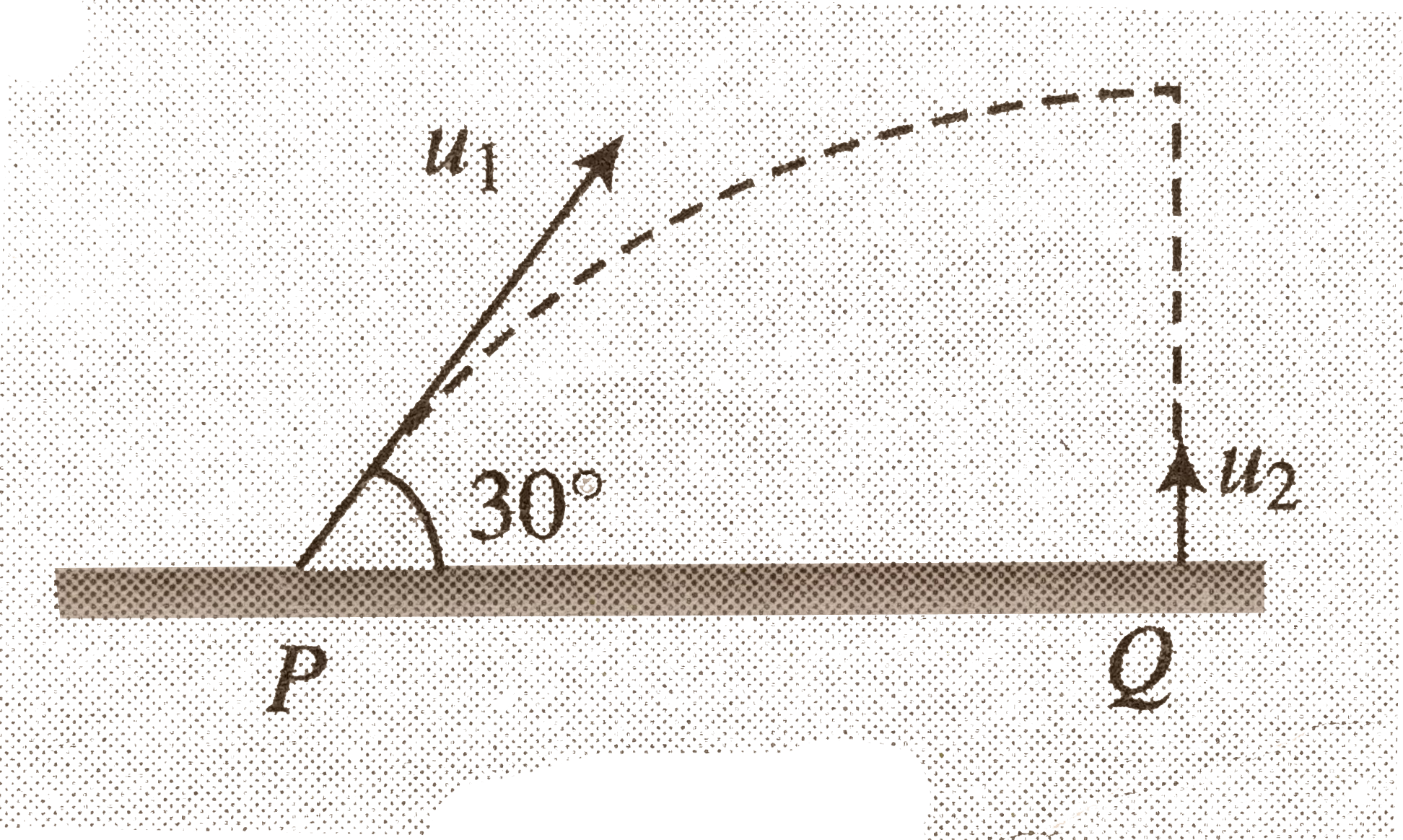A player throws a ball vertically upwards with velocity u. At highest point,
1. both the velocity and acceleration of the ball are zero.
2. the velocity of the ball is u but its acceleration
3. the velocity of the ball is zero but its acceleration is g.
4. the velocity of the ball is u but its acceleration is g.
The correct Answer is:C
To solve the problem, we need to analyze the motion of a ball thrown vertically upwards with an initial velocity u. We will determine the conditions at the highest point of its trajectory.
1. Understanding the Motion: When a ball is thrown upwards, it moves against the force of gravity. As it ascends, the gravitational force acts downwards, causing the ball to decelerate until it reaches its highest point.
2. Initial Conditions:
- Let the initial velocity of the ball be u.
- The acceleration due to gravity g acts downwards and has a magnitude of 9.8m/s2 (or approximately 10m/s2 for simpler calculations).
3. At the Highest Point:
- At the highest point of its trajectory, the ball momentarily comes to rest before it starts descending. Therefore, the velocity v at this point is 0m/s.
- However, the acceleration due to gravity g continues to act on the ball, which means the acceleration is not zero.
4. Conclusion:
- Velocity: v=0m/s at the highest point.
- Acceleration: a=g (approximately 10m/s2) acting downwards.
5. Evaluating the Options:
- Option 1: Both velocity and acceleration of the ball are 0. (Incorrect)
- Option 2: The velocity of the ball is u but its acceleration is not clear. (Incorrect)
- Option 3: The velocity of the ball is 0 but its acceleration is g. (Correct)
- Option 4: The velocity of the ball is u but its acceleration is g. (Incorrect)
Thus, the correct answer is Option 3.
- Let the initial velocity of the ball be u.
- The acceleration due to gravity g acts downwards and has a magnitude of 9.8m/s2 (or approximately 10m/s2 for simpler calculations).
- At the highest point of its trajectory, the ball momentarily comes to rest before it starts descending. Therefore, the velocity v at this point is 0m/s.
- However, the acceleration due to gravity g continues to act on the ball, which means the acceleration is not zero.
- Velocity: v=0m/s at the highest point.
- Acceleration: a=g (approximately 10m/s2) acting downwards.
- Option 1: Both velocity and acceleration of the ball are 0. (Incorrect)
- Option 2: The velocity of the ball is u but its acceleration is not clear. (Incorrect)
- Option 3: The velocity of the ball is 0 but its acceleration is g. (Correct)
- Option 4: The velocity of the ball is u but its acceleration is g. (Incorrect)
Topper's Solved these Questions
- MOTION IN A STRAIGHT LINEBOOK - NCERT FINGERTPS ENGLISHCHAPTER - MOTION IN A STRAIGHT LINEEXERCISE - RELATIVE VELOCITY
18 Videos
- MOTION IN A STRAIGHT LINEBOOK - NCERT FINGERTPS ENGLISHCHAPTER - MOTION IN A STRAIGHT LINEEXERCISE - HOTS
10 Videos
- MOTION IN A STRAIGHT LINEBOOK - NCERT FINGERTPS ENGLISHCHAPTER - MOTION IN A STRAIGHT LINEEXERCISE - ACCELERATION
19 Videos
- MOTION IN A PLANE BOOK - NCERT FINGERTPS ENGLISHCHAPTER - MOTION IN A PLANE EXERCISE - Assertion And Reason
15 Videos
- OSCILLATIONS BOOK - NCERT FINGERTPS ENGLISHCHAPTER - OSCILLATIONS EXERCISE - Assertion And Reason
15 Videos
Similar Questions
A man in a lift ascending with an upward acceleration a throws a ball vertically upwards with a velocity v with respect to himself and catches it after t1 seconds. After wards when the lift is descending with the same acceleration a acting downwards the man again throws the ball vertically upwards with the same velocity with respect to him and catches it after t2 seconds?
View SolutionFrom a lift moving upwards with a uniform acceleration a = 2ms–2, a man throws a ball vertically upwards. with a velocity v = 12ms−1 releative to lift the ball comes back to the man after a time t find. t
View Solution
Knowledge Check
A man in a lift throws a ball vertically upwards with a velocity v and catches it (i) after t1 second when the lift is ascending with an upward acceleration of 'a' and (ii) after t2 second when the lift is descending downward with the same acceleration 'a'. THe velocity of the ball v is
Ag t1t2B(1/2) g t1t2C2 g t1t2/t1+t2Dg t1t2/t1+t2
A person standing downward on a tower throws a stone vertically upward with a velocity u and drops another stone downward with same initial velocity. Which stone will strike the earth with a larger velocity ?
View SolutionA particle P is projected with velocity u1 at an angle of 30∘ with the horizontal. Another particle Q is thrown vertically upwards with velocity u2 from a point vertically below the highest point of path of P. Determine the necessary condition for the two particles to collide at the highest point.
 .
.
View SolutionA body is thrown vertically upward with velocity u, the greatest height h to which it will rise is,
View SolutionA ball thrown vertically upward with initial velocity u. Which of the following graphs represent the velocity of ball correctly as function of time?
(Take upward direction as positive)
View SolutionA ball is thrown vertically upward with a velocity u from the top of a tower. If it strikes the ground with velocity 3u, the time taken by the ball to reach the ground is
View SolutionA particle is projected vertically upward with velocity u from a point A, when it returns to the point of projection .
View SolutionA boy is sitting in a car moving with uniform velocity. The boy throws a ball vertically upwards which falls back into his hands. A man standing on the road watches the motion of the ball. The path of the motion of the ball will be:
View Solution
